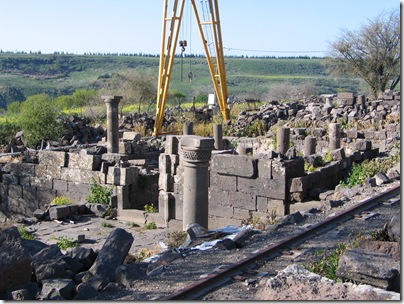Someone asked recently about online lectures related to archaeology. I have learned about a couple that aren’t exactly archaeological in nature, but may be of interest to readers here.
K. Lawson Younger is a professor at Trinity Evangelical Divinity School, and a highly regarded scholar in the field of Ancient Near Eastern Studies. He recently gave two lectures at Brigham Young University which can be viewed online.
Biblical Studies and the Comparative Method – Younger’s expertise on this is obvious when you realize that he was co-editor of the monumental Context of Scripture.
Finding Some of the Lost Tribes of Israel – Some might be surprised that a Mormon university would ask a Christian scholar to speak on this. I bet you that he doesn’t say that the ten lost tribes are in America! Younger has written much on this subject.
Start with these:
1998 The Deportations of the Israelites. Journal of Biblical Literature 117, pp. 201-227.
2002 Recent Study of Sargon II, King of Assyria: Implications for Biblical Studies. Pp. 288-329 in Mesopotamia and the Bible. Ed. M. Chavalas & Younger. Grand Rapids: Baker.
2003 Israelites in exile: their names appear at all levels of Assyrian society. Biblical Archaeology Review 29, no. 6 (Nov-Dec), pp. 36-45, 65-66.
But these are also relevant:
1999 The Fall of Samaria in Light of Recent Research. Catholic Biblical Quarterly 61, pp. 461-
482.
2002 Yahweh at Ashkelon and Calah?: Yahwistic names in Neo-Assyrian. Vetus Testamentum 52, pp.207-218.
2003 ‘Give Us Our Daily Bread’: Everyday Life for the Israelite Deportees. In Life and Culture in the Ancient Near East. Ed. R. Averbeck, M.W. Chavalas & D.B. Weisberg. Maryland: CDL.
2004 The Repopulation of Samaria (2 Kings 17:24, 27-31) in Light of Recent Study. Pp. 254-80 in The Future of Biblical Archaeology. Ed. J. Hoffmeier & A. Millard. Grand Rapids: Eerdmans.
Thanks to A.D. for the notice and the references.
